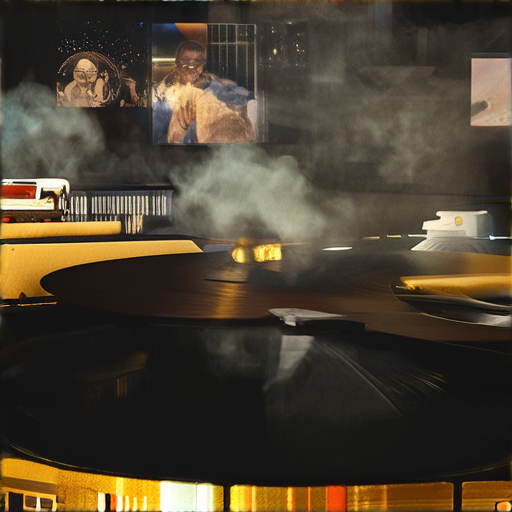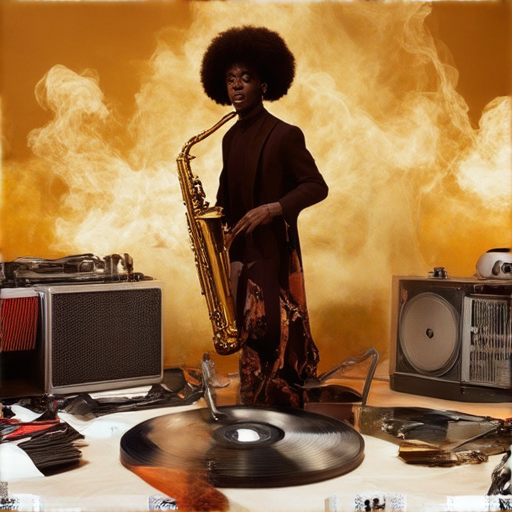As the sounds of smooth jazz fade into the background, a new wave of soulful melodies and infectious grooves emerges, redefining the boundaries of jazz fusion. From the pioneers who dared to experiment with new sounds to the contemporary artists pushing the genre forward, the story of soul and jazz fusion radio shows is one of innovation, creativity, and passion. Delving into the history of this captivating genre, exploring its evolution, and uncovering the secrets behind its enduring appeal, this journey takes us through the twists and turns of time, genre, and musical expression.
This exploration delves into the world of soul and jazz fusion, examining what once was, what remains, and what’s next. We’ll examine the legacy of smooth jazz, debunk common misconceptions about jazz fusion, and discover who shaped the genre. We’ll also investigate the impact of jazz fusion on the music industry, identify the dominant forces behind this genre, and uncover the truth behind the title of ‘father of jazz fusion’. Along the way, we’ll revisit classic and modern soul and jazz fusion radio shows, and explore how these iconic programs continue to captivate audiences today.

Is Jazz Fusion Really Jazz?
Jazz fusion has long been a subject of debate among music enthusiasts, with some arguing that it strays too far from traditional jazz.
- Definition and Origins: Jazz fusion emerged in the late 1960s, primarily through the experimentation of musicians who blended elements of jazz, rock, funk, and rhythm and blues.
- Key Characteristics: Jazz fusion often features complex time signatures, extended instrumental solos, and a blend of acoustic and electronic instruments.
- Relationship to Traditional Jazz: While jazz fusion draws inspiration from traditional jazz, its incorporation of non-jazz influences and emphasis on commercial appeal have led some to question whether it can truly be considered “jazz.”
- Criticisms and Controversies: Some critics argue that jazz fusion lacks the improvisational spirit and emotional intensity of traditional jazz, instead prioritizing technical virtuosity and showmanship.
- Counterarguments and Defenses: Proponents of jazz fusion counter that its eclecticism and willingness to push boundaries are essential aspects of the genre, allowing it to evolve and thrive in a rapidly changing musical landscape.
Evolution of Jazz Fusion
Jazz fusion has continued to evolve over the years, incorporating various styles and sub-genres into its sound.
- Early Pioneers: Musicians like Miles Davis, Herbie Hancock, and Weather Report helped establish jazz fusion as a distinct genre in the 1970s.
- Rock and Funk Influences: The addition of rock and funk elements in the 1980s, exemplified by bands like Return to Forever and Mahavishnu Orchestra, further expanded the genre’s sonic palette.
- Contemporary Scene: Today, jazz fusion continues to thrive, with artists like Kamasi Washington, Robert Glasper, and Snarky Puppy pushing the boundaries of the genre.
Conclusion
In conclusion, while jazz fusion may not conform to traditional notions of what constitutes “jazz,” its unique blend of styles and influences has given rise to a vibrant and dynamic genre that continues to captivate audiences worldwide.
What Happened to Smooth Jazz Radio?
Smooth jazz radio has undergone significant changes over the years, leading to its decline in popularity.
Evolution into Other Formats
- Many smooth jazz stations have transitioned to Rhythmic Oldies formats, retaining their original call letters.
- An example of this transformation can be seen in KOAS in Las Vegas, which experienced improved ratings among the 25-54 age demographic after adopting an “Old School” format.
Loss of Mainstream Appeal
Smooth jazz initially gained popularity in the late 1980s and early 1990s, but its mainstream appeal began to wane in the following decades.
Reasons Contributing to Decline
- Lack of fresh talent and innovative programming.
- Over-saturation of the market with similar smooth jazz stations.
- Shift in listener preferences towards other genres, such as hip-hop and pop.
Legacy of Smooth Jazz Radio
Although smooth jazz radio is no longer a dominant force in commercial radio, its legacy continues to influence contemporary music and culture.
Impact on Contemporary Music
- Smooth jazz paved the way for future genres, such as adult contemporary and urban jazz.
- The genre’s emphasis on melodic instrumentation and atmospheric soundscapes has influenced artists across multiple styles.

Why Was Fusion a Controversial Style of Jazz?
Fusion, a genre born out of experimentation and innovation, has long been shrouded in controversy within the jazz community.
- Perceived Disruption of Traditional Jazz: Fusion’s incorporation of non-traditional instruments, such as synthesizers and electric bass, led many to view it as a departure from the traditional jazz sound.
- Rock and Soul Influences: As fusion emerged in the late 1960s and early 1970s, it drew heavily from rock and soul music, sparking debate among purists who saw this as a betrayal of the genre’s roots.
- Commercialization and Mainstream Appeal: Fusion’s increased popularity and commercial success led some to accuse the genre of being overly commercialized, diluting its artistic integrity and authenticity.
- Criticisms of Lack of Improvisation: Some critics argued that fusion’s emphasis on composition and arrangement resulted in a lack of genuine improvisational spirit, which was seen as antithetical to the very essence of jazz.
The Role of Electric Instruments in Fusion
Electric instruments, once considered taboo in traditional jazz, played a pivotal role in shaping the sound of fusion.
- Hammond Organs and Synthesizers: These electronic keyboards brought a new level of expressiveness and timbre to jazz, allowing musicians to explore uncharted sonic territories.
- Electric Bass and Drums: The introduction of electric bass and drums further expanded the sonic palette, enabling fusion musicians to create complex, driving rhythms.
Reconciling Tradition and Innovation
As fusion evolved, many musicians sought to reconcile the tension between tradition and innovation, incorporating elements of both into their work.
- Hybridizing Styles: Musicians began to blend different styles, combining elements of jazz, rock, funk, and classical music to create something uniquely fusion.
- Experimentation and Risk-Taking: By embracing uncertainty and taking risks, fusion musicians were able to push the boundaries of what was possible within the genre.

Jazz Fusion Musicians
Jazz fusion combines elements of jazz and rock music, often incorporating electronic instruments and complex rhythms.
- Key Figures:
- Miles Davis: A legendary trumpeter and bandleader who experimented with fusion in the late 1960s.
- Herbie Hancock: Pianist and composer known for his work in jazz fusion, particularly during the 1970s.
- Weather Report: A influential jazz-fusion band featuring Joe Zawinul and Wayne Shorter.
- Return to Forever: A group led by Chick Corea, which blended jazz and rock elements.
Early Influences and Development
The roots of jazz fusion can be traced back to the 1950s and 1960s, when musicians began experimenting with new sounds and styles.
- Rock and Roll Influence:
- Rock music’s emphasis on rhythm and energy influenced jazz musicians to incorporate similar elements into their playing.
- Electronic Instruments:
- The introduction of electronic keyboards and synthesizers expanded the sonic palette of jazz musicians.
Characteristics and Subgenres
Jazz fusion is characterized by its blend of jazz and rock elements, often featuring complex time signatures and extended instrumental passages.
- Subgenres:
- Smooth jazz: A subgenre that emerged in the 1980s, characterized by a more commercial and radio-friendly sound.
- Acid jazz: A genre that combines elements of jazz, funk, and electronic dance music.
Legacy and Impact
Jazz fusion has had a lasting impact on the development of various musical genres, influencing everything from hip-hop to electronic music.
- Influence on Hip-Hop:
- Many hip-hop artists have cited jazz fusion as an influence, incorporating elements of the genre into their music.
- Electronic Music:
- Jazz fusion’s emphasis on experimentation and innovation has inspired generations of electronic musicians.
Jazz Fusion Pioneers
Key Figures and Bands
- Miles Davis
- Herbie Hancock
- Weather Report
- Return to Forever
- Chick Corea Elektric Band
The dominant force behind jazz fusion was a diverse group of musicians who experimented with combining elements of jazz, rock, funk, and electronic music.
Early Experimentation and Innovation
Miles Davis was indeed a pioneer in this genre, releasing groundbreaking albums like “Bitches Brew” and “A Tribute to Jack Johnson”. These records showcased his willingness to incorporate electric instruments and rock rhythms into traditional jazz settings.
Other Notable Artists
- Herbie Hancock: Known for his work with Miles Davis, Hancock continued to push the boundaries of jazz fusion with his own band, Weather Report.
- Weather Report: Formed in the early 1970s, this band became synonymous with jazz fusion, featuring a unique blend of jazz, rock, and world music influences.
- Return to Forever: Led by Chick Corea, this influential band combined jazz, rock, and Latin American music styles to create a distinctive sound.
- Chick Corea Elektric Band: As a solo artist and bandleader, Corea continued to explore the possibilities of jazz fusion, incorporating elements of rock, funk, and electronic music into his work.
Impact and Legacy
The innovations of these artists had a profound impact on the development of jazz and popular music as a whole.
Jazz fusion paved the way for future genres such as acid jazz, smooth jazz, and nu jazz, influencing a wide range of musical styles and artists.

The Father of Jazz Fusion
Miles Davis is widely regarded as one of the pioneers of jazz fusion, however, the title of “father” is often attributed to another influential figure in the genre – Herbie Hancock.
- Herbie Hancock’s album ‘Head Hunters’ released in 1973 is often cited as a landmark work in the development of jazz fusion.
- Hancock’s innovative blend of jazz, funk, and rock elements paved the way for future generations of musicians.
- His collaboration with guitarist Larry Coryell and bassist Paul Jackson Jr. further solidified his position as a leading force in the emergence of jazz fusion.
Key Characteristics of Herbie Hancock’s Jazz Fusion Style
- Integration of electronic keyboards and synthesizers into traditional jazz instrumentation.
- Heavy use of percussive elements and polyrhythms.
- Blending of jazz harmonies with funk and rock rhythms.
Impact of Herbie Hancock’s Work on Jazz Fusion
- His influence can be seen in the music of artists such as Weather Report, Return to Forever, and Miles Davis himself.
- Hancock’s experimentation with electronic instruments and production techniques raised the bar for jazz musicians looking to incorporate new sounds into their music.
- He played a significant role in shaping the sound of jazz fusion in the 1970s and beyond.

0 Comments